
 Flash News
Flash News
Counting ends in Kukës district, DP wins 2 mandates
Egnatia is declared champion of Albania, ending Vllaznia's 24-year dream
DP leads in Kavaja against SP
Financial Times / Rama wins fourth term: the creation of a cosmetic pluralism is at risk
Neither PS, nor DP/ In Vau i Dejës, Tom Doshi's party is declared the leading force
Graph from 1934, how Albania is being "digested", with negative natural supplements for the first time in history
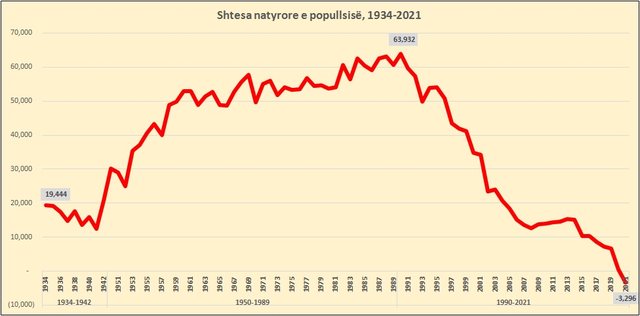
The beginning of the transition found Albania at the best demographic moment in its history.
In 1991, there were 82,000 births and 17.7,000 deaths in the country. The natural increase of the population (the difference between births and deaths in a year) in the year in question was almost 64 thousand people. The trend had been steadily increasing since the 1960s.
After 1991, the natural increase of the population began to shrink rapidly. The main reason was emigration, which gradually shrunk the population, combined with lifestyle changes, such as marriages at a later age, having fewer children, or even increasing divorces.
International institutions estimate that about 40% of the country's population currently lives outside Albania, mainly in Italy, Greece, other European countries, USA, etc. After the fading of the new first cycle of emigration in the early 1990s, the trend was revived again after 2016, ascertained by the increase in the number of asylum applications. In the second wave of emigration, mainly young people are leaving, but also families.
According to INSTAT, in 1990 there were about 29 thousand marriages, while in 2019, their number was about 22 thousand. In the same period, divorces increased from 2600 to almost 6000. The number of divorces per 100 marriages reached a record of 26.1 in 2019, with one-fifth of couples separating (in 2020 both marriages and divorces fell, but behavior was not normal due to limitations affected by the pandemic).
The decline in the number of births year after year has worsened the quality of generational replacement. The Synthetic Fertility Index (ISF), which shows the average number of children a woman of childbearing age is expected to give birth to, marks 1.34 children by 2020, up from 1.36 in 2019, one of the lowest rates in Europe. . In 2001, according to INSTAT, this indicator was 2.1, while in the 1970s it was over 5.
As a result of these developments, the median age of the population (separating the younger half from the older one) increased to 37.6 years in 2021, from 32.6 years in 2011, while before the 1990s it was about 27 years. However, even at these levels, Albania continues to remain a young population (median in Europe is over 40 years old).
Covid delivered the final blow, for the first time in history the natural increase was negative in 2021
Population aging was bringing about a gradual increase in deaths in the country as births were shrinking, narrowing the natural increase of the population, which was gradually moving towards zero.
Covid-19 only accelerated this trend. After the outbreak of the pandemic in March 2020, the consequences were severe on the health of the population and mortality increased rapidly.
Për gjithë vitin 2021, në vend u shënuan gjithsej rreth 30.6 mijë (30,580) humbje jete, duke shënuar nivelin më të lartë rekord të arritur ndonjëherë në historinë e vendit. Ky është viti i dytë radhazi, kur fatalitetet në vend po rezultojnë të larta. Në vitin e parë të pandemisë, në 2020-n u regjistruan në total 27.6 mijë fatalitete, nga 21.8 mijë që ishte mesatarja e periudhës 2016-2019.
Në krahasim me mesataren e 2016-2019, kur ishte një periudhë normale, vdekjet në vitin 2021 janë rritur me 40%. Edhe në 2020-n, vdekshmëria shtesë në raport me mesataren 2016-2019 u rrit me rreth 26%.
Në të kundërt, pandemia ndikoi negativisht në planifikimet familjare dhe rritjen e aborteve spontane (të ndikuara nga pasojat e pandemisë në shëndetit e femrave shtatzënë), duke sjellë rënie të lindshmërisë.
In 2020 there were only 470 births more than deaths, while in 2021, for the first time in history almost 3.3 thousand deaths more than births were recorded.
According to the latest INSTAT data, the resident population of Albania at the beginning of 2021 was about 2.83 million people, but it will be the next census, which will show the real numbers of people who have remained in Albania. / Monitor
Latest news


Vote counting in Mirdita concludes, DP wins convincingly
2025-05-12 23:40:46
Diaspora vote counting/ Observer - Ballës: Get out, you kicked us out of Albania
2025-05-12 23:27:36
Four almonds a day, 6 direct benefits to the body
2025-05-12 23:15:40
Vllaznia team 'doctor' arrested, dozens of fireworks found in his bag
2025-05-12 23:02:26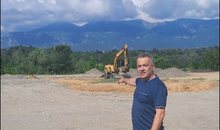
Denunciation/Electoral Reward for Noizy
2025-05-12 22:51:44
She won the mandate from the open list in Kukës, here is who Elvira Peka is
2025-05-12 22:38:39
Victory in Kukës, Flamur Hoxhaj: Fruit of the work and program we have done
2025-05-12 22:30:07
Tritan Shehu talks about the election result: Lazarati voted for the DP
2025-05-12 22:30:03
Trump may travel to Turkey for negotiations between Zelensky and Putin
2025-05-12 22:16:46
Counting ends in Kukës district, DP wins 2 mandates
2025-05-12 22:11:27
Egnatia is declared champion of Albania, ending Vllaznia's 24-year dream
2025-05-12 22:03:56


Albanian convict terrorizes prison in Greece, takes guards hostage
2025-05-12 21:36:15
Rama leaves headquarters, does not speak to journalists
2025-05-12 21:26:16
New report, old refrain
2025-05-12 21:18:59
DP gains advantage in Lezha, secures 4 mandates
2025-05-12 21:06:16
DP leads in Kavaja against SP
2025-05-12 20:57:52
In Shkodra, Vllaznia brings together the commissioners of the SP and the DP
2025-05-12 20:43:15
60% of votes counted across Albania, how mandates are distributed
2025-05-12 20:30:56

OSCE-ODIHR Report/ Media in Albania, collaborators of the government
2025-05-12 20:20:13
What would happen to your body if you slept less than six hours?
2025-05-12 20:08:27
Counting closes in Librazhd, how votes were divided between the DP and the SP
2025-05-12 20:02:24

Celibashi: Here's when we can have the final election results
2025-05-12 19:45:19
The May 11 elections, with old problems
2025-05-12 19:37:31
Source: DP should request the annulment of the elections
2025-05-12 19:25:20
From May 15, President Osmani begins efforts to unblock the Parliament
2025-05-12 19:18:39

Vllaznia-Egnatia is played today, Shkodra fans arrive at the "National Arena"
2025-05-12 19:03:11
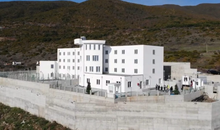
Even in the women's prison, the SP is voted for
2025-05-12 18:44:08
Accident in Laç, 84-year-old man taken to Trauma Hospital
2025-05-12 18:30:36
Counting continues in Tirana, Tabaku: Projection of mandates will change
2025-05-12 18:18:03

The Diaspora vote, a reflection of the elections within the country?
2025-05-12 17:59:12



The DP leads confidently in Fushë Krujë and Kamëz
2025-05-12 17:19:50



Number of diplomas declining, 9-year education most affected
2025-05-12 16:41:54
Leaving aside votes from Greece, CEC: They will not be excluded from the count
2025-05-12 16:31:53

They photographed ballots, two people are wanted in Tirana
2025-05-12 16:11:52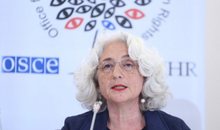
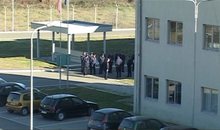
Prisoners choose Rama!? PS wins with 82% in Elbasan detention center
2025-05-12 15:55:19

Austrian tourist, injured in accident on Himara-Borsh road, dies
2025-05-12 15:37:14
The counting process in Cërrik ends, here's who won
2025-05-12 15:31:20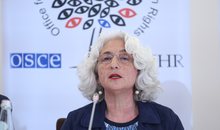

"There are violations!"/ Vote counting halted in CEAZ 17 in Klos
2025-05-12 15:11:41


Who are the candidates of small parties who secure a seat in the Assembly?
2025-05-12 14:50:24
The elections were held under political patronage - organizations emphasize
2025-05-12 14:49:37
Berisha warns: The opposition will not turn a blind eye to violations
2025-05-12 14:28:33

Why did Rama grow up?
2025-05-12 14:11:37



Vote counting in Delvina closes, here are the results
2025-05-12 13:38:57
He is running on an open list, how many votes has Ilir Meta received so far?
2025-05-12 13:20:00



Vote counting in Fier suspended, process resumes tomorrow at 08:00
2025-05-12 12:24:35
Electronic voting results published in Vora, votes for each party
2025-05-12 12:10:03
In such elections, victory can only be Edi Rama's.
2025-05-12 12:01:10
Threatened journalist during duty, 26-year-old faces criminal charges
2025-05-12 11:57:39

The counting process in Himara ends, the Socialist Party wins
2025-05-12 11:49:17
May 11th elections, SPAK: 39 criminal proceedings have been registered
2025-05-12 11:36:25


PSD third political force, what are the chances of the 'small ones' so far?
2025-05-12 11:04:31
Counting ends in Rrogozhina, SP emerges as the leading force
2025-05-12 10:50:30
Counting ends in Tepelena, Socialist Party wins
2025-05-12 10:45:23
Counting ends in Memaliaj, Libohova and Këlcyrë, here's who's leading
2025-05-12 10:28:23
Mirditë/ DP leads over SP, how many votes have they received so far
2025-05-12 10:23:30
Spain makes decision, shortens weekly working hours
2025-05-12 10:10:30

Threats for a vote, the party's deputy chairman under investigation by SPA
2025-05-12 09:53:18
The DP-ASHM coalition leads in Kavaja
2025-05-12 09:47:41
DP-ASHM leads in Kukës after counting 71 ballot boxes
2025-05-12 09:31:26
BIRN: Organized crime “oriented” the vote in Durrës
2025-05-12 09:24:39

Counting ends in Kolonjë, who is leading?
2025-05-12 09:00:13

Counting ends in Pustec, SP leads
2025-05-12 08:41:21
First diaspora votes counted, DP-ASHM leads by a narrow margin over SP
2025-05-12 08:38:13

DP leads in Kukës, over 3 thousand votes ahead of SP
2025-05-12 08:16:02
First ballot boxes counted, DP-ASHM leads in Kruja
2025-05-12 08:04:38
